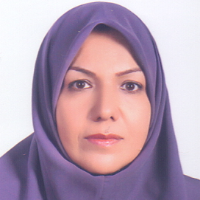Historical and Archaeological Study of Qal’eh Dokhtar in Kerman; The Process of Construction and Reconstruction, Dating and Architectural Function
Qal’eh Dokhtar, as one of the important historical sites on the eastern outskirts of Kerman, has been described in historical texts with different names such as Qal’eh Kooh and Qal’eh Kohan, as a place of political and social events. One of the important features of this castle is its special location in Kerman plain, as well as the extent of its architectural structures and type of materials. The purpose of this study is to analyze the nature, function, and chronology of Qal’eh Dokhtar. This study was done based on the results of an archaeological survey, sounding, and archaeological excavation in 2019 in this site. This study can explain the role and position of Qal’eh Dokhtar in the social and political developments of Kerman during the Islamic era. Data collection was done by documentary and field methods and the research method is descriptive-analytical. The questions are: When were the foundations and renovations of Qal’eh Dokhtar made and what were the functions of this complex? For this purpose, the data of previous archaeological research and recent field activities of the authors were studied and reviewed, and while studying the historical geography of the region, a correct idea of the nature, formation, and function of this building in relation to cultural developments, Political and social of this area in the different period were presented. The study of cultural materials along with the study of historical sources shows that this site is probably almost continuously inhabited from the pre-Islamic period and certainly from the first centuries of Islam to the tenth century AH. The results show that this structure has played a decisive role in the political and social developments in the region. It seems that Qal’eh Dokhtar was probably constructed and reconstructed from the pre-Islamic period and certainly from the first centuries of Islam to the Safavid era for establishing a military and defense base, as a place to hold political prisoners, a treasury, a safe haven for sit-ins and the rulers and their families.
-
THE EFFECTS OF CLIMATE AND ENVIRONMENT ON THE FORMATION AND DEVELOPMENT OF ARCHITECTURE ON THE COASTS OF CHABAHAR AND KONARAK DURING THE ISLAMIC ERA
Leila KEIKHA *, Saeed AMIRHAJLOO, Reza NASERI
Journal of Sistan and Baluchistan Studies, Jun 2024 -
Principles of Climate Responsive Architecture in Qajarid Residential Architecture in Ashtian, Iran
Nayyer Hajitaher, *, Javad Neyestani
Parseh Journal of Archaeological Studies, -
Typology of Egyptian glassware and its comparison with symbols, motifs and decorations of Iranian glassware (5th and 6th centuries AH)
Ali Behnia *,
Journal of Islamic Archaeology Studies, -
An Analysis of Spatial Configuration at Qal’eh Dokhtar, Kerman Using the Space Syntax Technique
Sare Tahmasbizade, *,
Iranian Journal of Archaeological Studies, Summer and Autumn 2023



